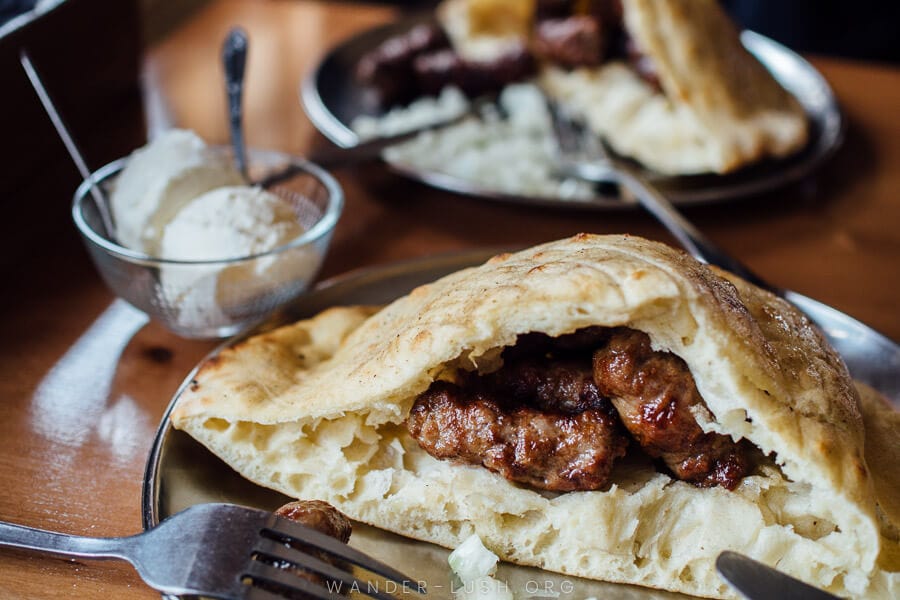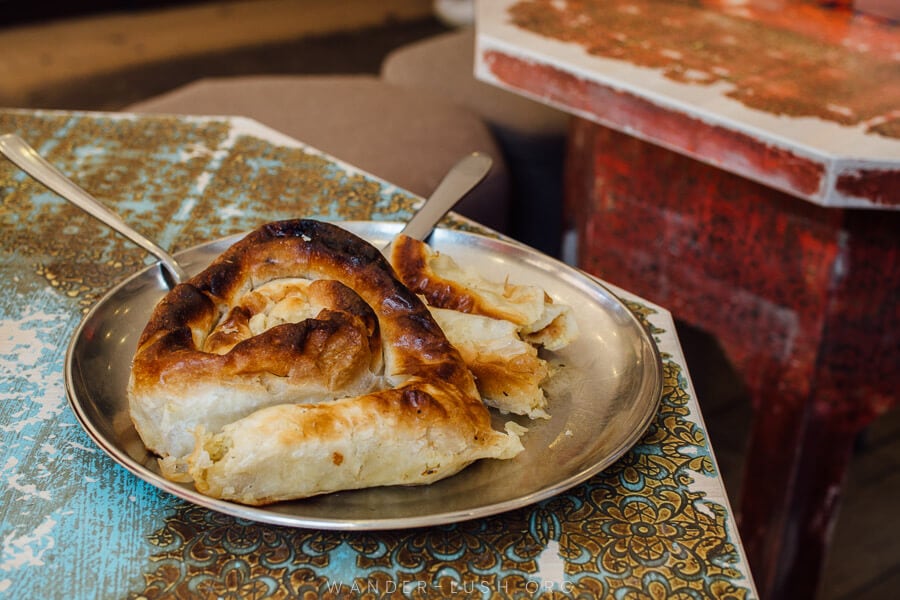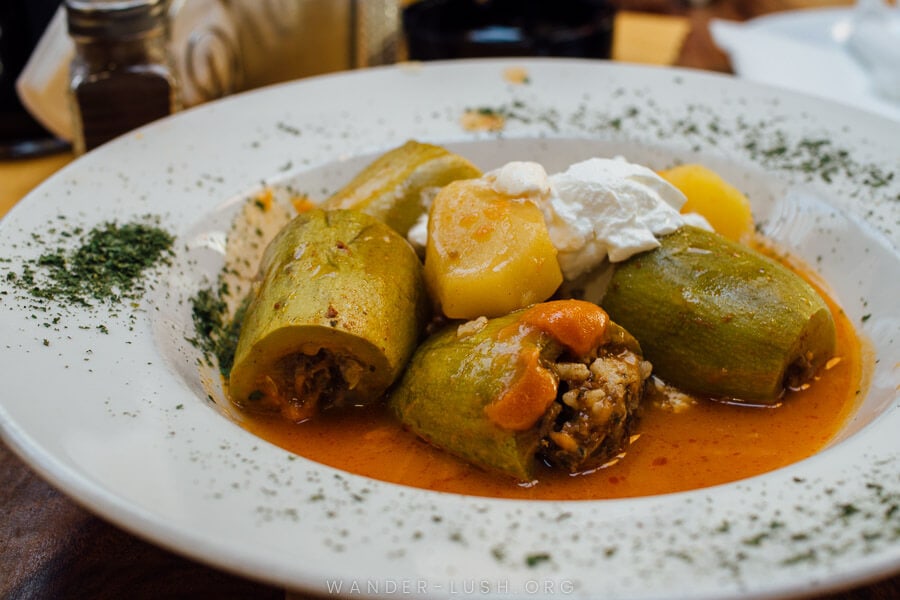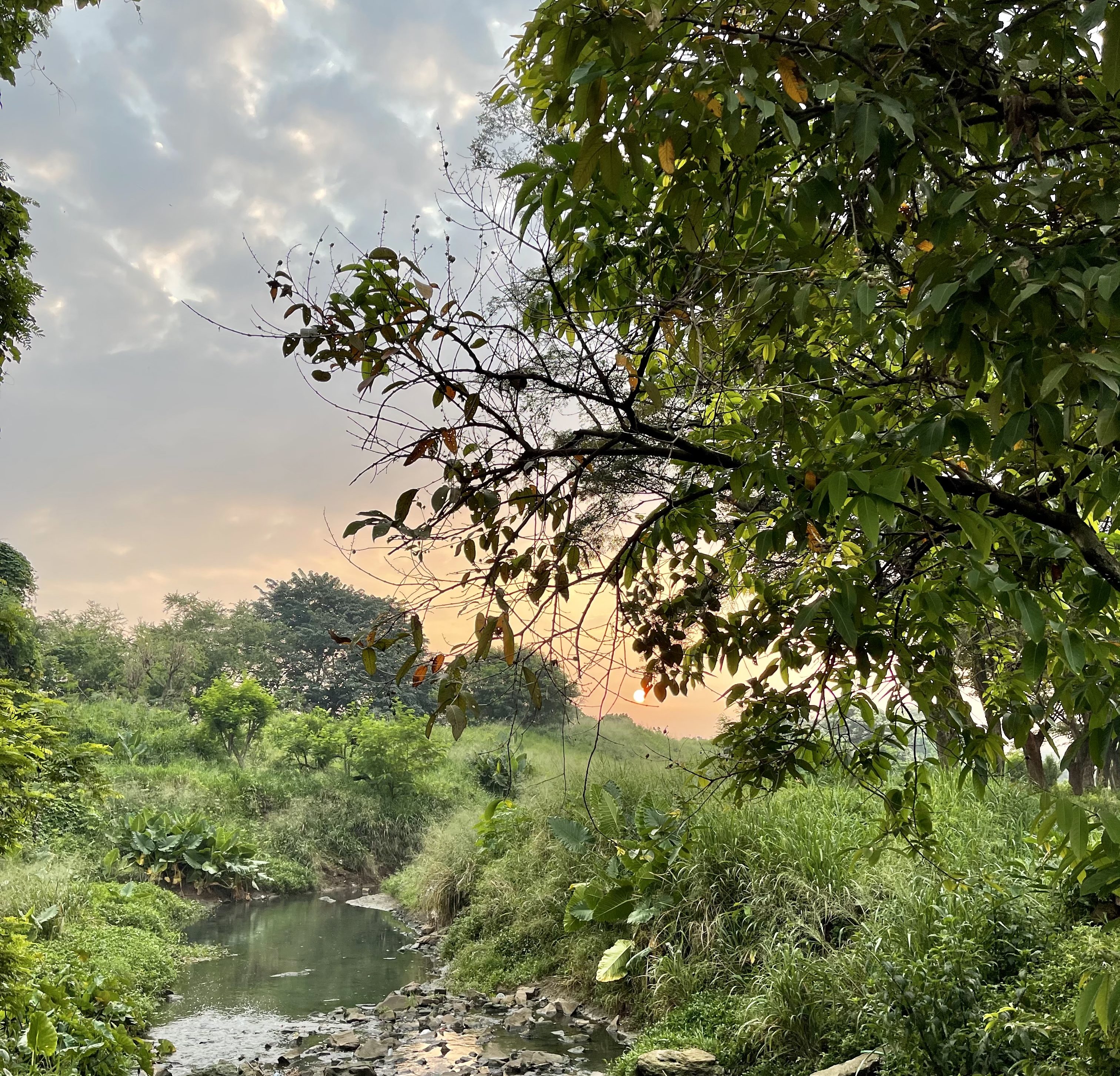Food is an extremely important part of the culture in Bosnia and Herzegovina, where preparing and sharing food is part of the social fabric. Many meals are steeped in history and tradition, and reflect the mix of cultures that makes BiH so diverse.
A lot of Bosnian dishes are plant-based and seasonal as a result. It’s only really in the cities and tourist centres where you find heapings of meat. Most peoples’ diets revolve around vegetables and beans.
When meat is served, it’s really served – mixed-grill style with all kinds of cuts on the one plate. Normally you see beef and lamb rather than pork, but people who do not follow Islam still consume pork.
Bosnian food is flavoursome but uses spices sparingly. Hearty soups and stews are very popular along with stuffed vegetables, rice-based dishes and of course, beans.
Traditional restaurants called aščinica are often the best place to try national dishes, so look out for this label. Venues that have an open grill and cook their meat and veg over hot coals to order are particularly good. I’ve sprinkled a few of my best Bosnia restaurant recommendations throughout the article.
1. CEVAPI (GRILLED MINCE PATTIES)

You see this dish absolutely everywhere in the Balkans. Each country puts its own spin on it. In Bosnia, cevapi is made with a combination of beef and veal, mutton or lamb with the addition of salt, pepper and a little baking soda. Before it’s grilled, the meat is rested in a clear broth made with veal bone and mutton for extra oomph.
Cevapi are normally shaped into small, oblong kebabs. Some regional versions within BiH are different, such as Banja Luka cevapi which is shaped more like a patty with four kebabs joined together.

Most restaurants allow you to specify how many cevapi you want. A typical serving is 5-10 pieces.
Cevapi is always served with pita bread called somun or pitica, which is also dipped in broth and grilled, a heaping of chopped, raw white onion on the side, plus ajvar (red pepper paste) and/or kaymak (a soft cream cheese).
2. BUREK & OTHER TYPES OF PITA (STUFFED PIES) – ESSENTIAL BOSNIAN FOOD

Introduced from Persia by way of Turkey, burekbecame a popular dish throughout the entire former Ottoman The Empire and remains a go-to street food in Bosnia to this day. The first buregdžinica – a specialised bakery that exclusively prepares burek – opened in Sarajevo in the early 1460s. Sarajevans haven’t looked back since.
Burek is to Bosnia what pizza Napoletana is to Italians – that is, sacred stuff. Beyond their similar cultural value, the two share some other similarities: Both use a basic wheat dough and are oven-baked. Burek is not a pizza though – it’s a stuffed ‘pie’ filled with meat and coiled into a spiral shape. Burek is a type of pita. Vegetarian pitas are similar but the shape is different and the filling is meat-free.
Popular variations of pita include:
- Krumpiruša (potato pita)
- Tikvenjača (pumpkin pita)
- Sirnica (cheese pita)
- Zeljanica (spinach and cheese mixed pita)

Flaky and greasy (usually in a good way), burek is traditionally a Thursday and Sunday breakfast dish but can be eaten any time, any day. Some bakeries serve a sweet version stuffed with sour cherry.
When you visit a buregdžinica, you order either by piece or by weight so you can easily try a combination of two or more varieties. Normally burek is served warm and paired with either sour cream or a glass of ayran drinking yogurt on the side.
3. DOLMA, SARMA, PUNJENA PAPRIKAS & JAPRAK (STUFFED VINE LEAVES & VEGETABLES)

Stuffed vegetables are another staple of Bosnian food, particularly in regional areas where less meat is consumed. Every restaurant menu in Sarajevo features at least a few options from this family, including:
- Punjena paprika (stuffed bell peppers)
- Sogan dolma (stuffed onions)
- Sarma (meat and rice stuffed inside pickled cabbage leaves)
- Japrak (stuffed vine leaves)
Eggplant, zucchini and other vegetables also get the dolma treatment. (If it can be stuffed, it will be.) Normally the filling is a blend of minced meat and spiced rice, but plain old ‘dolma’ is normally vegetarian-friendly and filled with rice only.
Sogan dolma, a specialty in Mostar, is my personal favourite. After the meat and rice filling is placed inside the onion, it’s cooked in a pot for about 20 minutes then served dressed in its own gravy. Yum.

